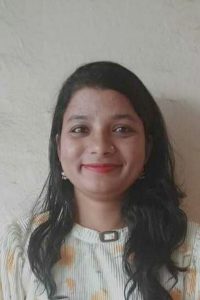First things first. Let’s clarify the term Real-World Asset and its relevance in the Web3 ecosystem. Next, you’ll understand why emerging markets are the most fertile ground for adoption. From historical context to market projections, you gain an all-around awareness of the powerful tool that’s destined to close financial and technological gaps in the real world.
Real-World Assets for Real-World Purposes – an Impact Analysis
-

Positive Blockchain is a non-profit organization, offering an open database of blockchain for social and environmental impact.
Visit website -

Positive Blockchain is a non-profit organization, offering an open database of blockchain for social and environmental impact.
Visit website

2. Real-World Assets for Real-World Purposes - The Ranking
And the winner is…. Which RWA use case is most impactful on the world economy? Our unique scoring system helps you evaluate the market for RWA projects in various niches. You’ll get a comprehensive overview of all the areas RWAs are applied to and their impact. This’ll help you assess the future potential of your initiative.

3. Existing RWA Business Models and a New One to Try
Summary: From tokenization to trading and lending, each platform model has its strengths and limitations. This chapter examines the most common ones with a specific focus on their relevance for emerging markets. You’ll also be the first to learn about the completely new and unique model Onvest, a hybrid framework that combines financial inclusion with sustainability, offering a more integrated approach to RWA adoption.
4. How to build RWA Projects for Real-World Impact
Now let’s get to work! What you read here will help you design the right tech stack for your RWA tokenization. There are key decisions you’ll need to address, from blockchain selection and consensus mechanisms to oracles, token standards, and cross-chain setup. How do you approach them, collect the essential information, and what follows after what. And more.
Key Takeaways
- RWAs hold real promise but not all use cases are equal: Real-World Assets represent one of the most grounded and high-potential use cases in blockchain, especially when addressing practical, real-life challenges. However, their impact varies significantly depending on the category and context in which they’re applied.
- Stablecoins lead the pack in emerging markets: Among the 9 RWA categories analyzed in this report, stablecoins stand out as the most effective and universally impactful driving financial inclusion, enabling global payments, and unlocking new economic opportunities in frontier economies.
- Agriculture and ReFi show underrated strength: RWA applications in agriculture and regenerative finance (ReFi) show strong potential to reduce poverty, stimulate local entrepreneurship, and improve infrastructure with fewer regulatory and technical hurdles than real estate or private credit.
- The tokenization advantage is still largely untapped: While the benefits of tokenization are clear in theory, transparency, fractional ownership, and programmable assets remain underutilized in practice. Legal uncertainty, complex tax treatment, and inconsistent offchain-to-onchain integration are slowing progress.
- RWAs matter most where traditional systems fail: The transformative potential of RWAs lies in regions underserved by traditional finance. In high-inflation economies with limited banking infrastructure, RWAs aren’t just a narrative rather they’re a necessity.
- In developed markets, RWA use may skew toward investment products: In developed countries, RWAs are more likely to support capital market innovation than grassroots change. Use cases will cater to institutional investors before solving infrastructure or small business challenges.
- Technical and regulatory challenges are the main friction points: Fragmented blockchain infrastructure, poor UX, and unclear jurisdictional rules continue to hinder mainstream RWA adoption. Interoperability gaps and compliance burdens must be addressed for the sector to scale responsibly.
How did we approach the research?
The research was based on the “grounded theory.” It means we had no specific presumptions before staring the analysis. Our goal was to find the niche of RWAs that is the most valuable “for humanity” – all the next steps were then focused on mapping and evaluating such categories.
Research limitations
- Some application areas commonly associated with RWAs were not included in the report because they don’t fit the definition of “Real-World Assets for Real-World Purposes”. Tokenized treasury bills, equities, or cash are primarily aimed at investors and speculators and are prominent in developed countries.
- The report covers emerging markets, however, it includes some frontier markets as well that might benefit from some of RWA’s real-world usage applications.
- The ranking is based on thorough research and quantitative scoring. However, it shouldn’t be viewed as a definitive indicator. The level of potential in particular niches remains debatable and may change over time – along with new emerging use cases in the outlined categories.
Led
-

Michał Moneta
Leader & Chief Strategy Officer
Conducted by
-

Ananya Shrivastava
Research Analyst
-

Ambreen Khral
Market Researcher
-

Arin Soleymani
Head of Business Development
-

Boris Agatić
Data Scientist
Contributors
-

Lucas De Melo
UX Designer
-

Ruth M. Trucks
Head of Content
-

Chris Braithwaite
Content & Technical Writer